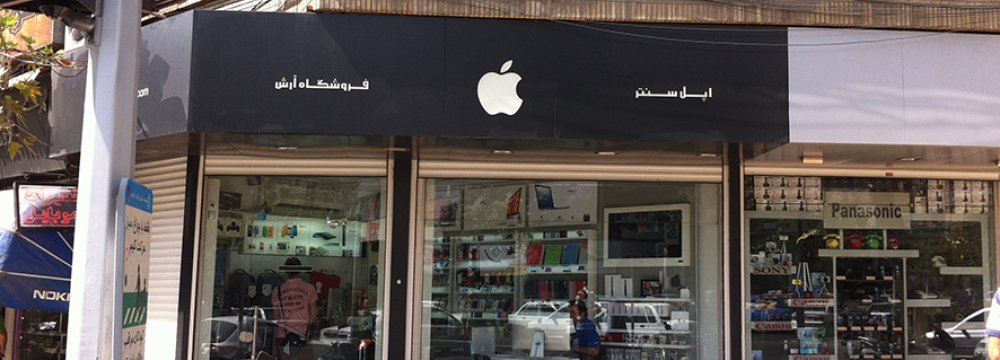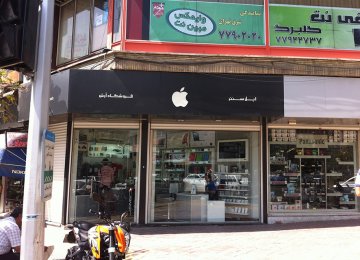A new report has highlighted the shifting trends in consumers’ habits in the Iranian electronics market.
The February report of Business Monitor International expects the consumer electronics market to expand at a compound annual growth rate (CAGR) of 6.5% between 2015 and 2019.
It also expects strong growth in mobile handsets sales, particularly in terms of smartphones, once the 3G market becomes more competitive. The report adds that the growth in handset market will primarily occur in the cheaper handset market, and Chinese and low end manufacturers will make the most gains in this respect.
The growth in the market will also be sustained by strong ongoing growth in audio-visual (AV) devices and computers. Mobile handsets have the advantage of being sold per mobile connection, and households will likely have several devices. BMI forecasts that market penetration will reach 163 percent by 2019, while in 2014 making up 21 percent of the total market.
The report notes that even taking into account the size of the population, the level of gross domestic product and the removal of restrictions on the import of some devices, the market will not reach its full potential in the short to medium term.
The market research company notes the limit in potential growth comes down to one of a few factors.
The US’ National Defense Authorization Act or NDAA has been a major contributor for putting electronics manufacturers of the Iranian market due to banking restrictions and not on the actual market. The report notes that companies such as HTC and Samsung have made the most gains considering the restrictions in the market overall.
The report adds that in the longer term, Iran has many positive characteristics in providing consumer electronics manufacturers. It adds that the steadily growing population will support growth in the market, with the majority of purchasers making up the bulk of the country’s population. The report notes that unfortunately due to ‘grey imports’ of electronic goods many manufacturers struggle to understand the market’s make up.
BMI also indicates that computer hardware is estimated to have been the biggest consumer electronics market category in 2014 and is expected to account for about 54% of spending for the duration of it five-year forecast period.
Government spending will help drive the market, while demand will also be strong in the SME and consumer segments. Spending will rise at a CAGR of 6.9% through to 2019, with an emphasis on notebooks and netbooks, which currently account for over 70% of sales.
Regional Risk-Reward Ratings
BMI shows that sales of mobile handsets - and smartphones in particular - continue to drive growth in the consumer electronics markets of the Middle East and North Africa (MENA) region.
Sales are, in turn, driven by the rapid expansion of mobile networks, the over-reliance on mobile data networks for internet connectivity and the lower price points for devices, relative to the computer hardware and AV devices segments. These factors increase the vulnerability of mobile devices to counterfeiting, limiting the overall market potential for investors.
The report goes on to say that product smuggling and counterfeiting are major risk factors for consumer vendors in the MENA region especially in the Iranian market.
There are two prevalent forms of grey market activities in the region, the report says. The first is outright counterfeiting of consumer electronics products, particularly consumables, such as printer ink cartridges, and devices and accessories, including handsets, and the second involves the sale of authentic products that have not been officially launched in the local market. Consumer electronics products such as high-end smartphones (Iphone 6), games consoles, and cameras often fall into the second category.
The report adds that some device manufacturers are attempting to tackle the problem by reducing the time lag between releasing new products in developed and in emerging markets. However in the case of Iran this is more difficult as companies like Apple Inc. have neither representation nor do they have partner warranty companies to deal with after-sales services.
BMI sums up on the industry talking about what it expects the personal computer market to be in the next five years. It estimates PC market sales of $4.4 billion in 2014, rising to $6.2 billion by 2019. Despite limited broadband access, BMI believes the market has strong growth potential as the government rolls out its own internet network and household computer penetration increases. Notebooks will drive the market, and tablets will be increasingly important, and the expansion of mobile data networks will drive the demand for dongles.





